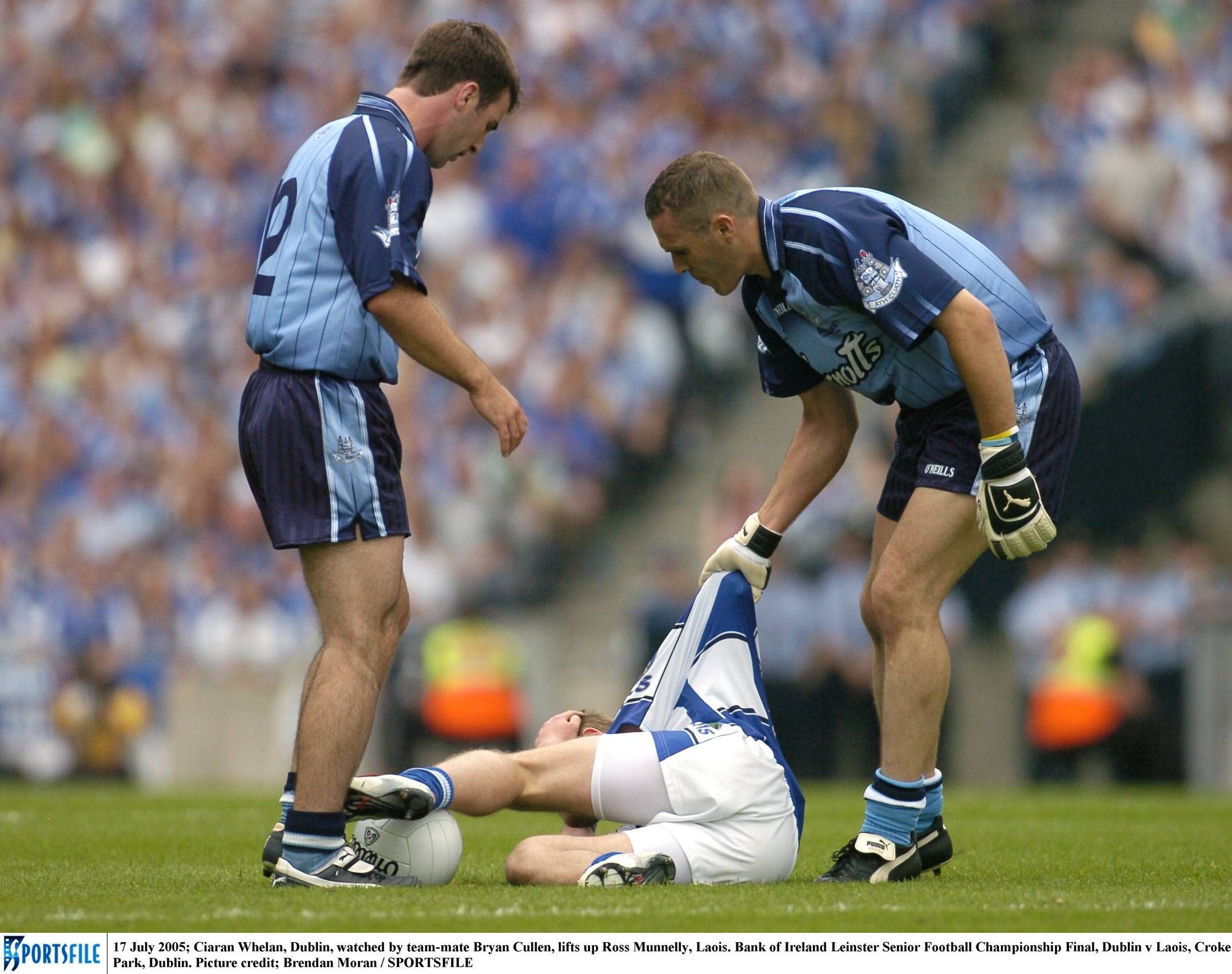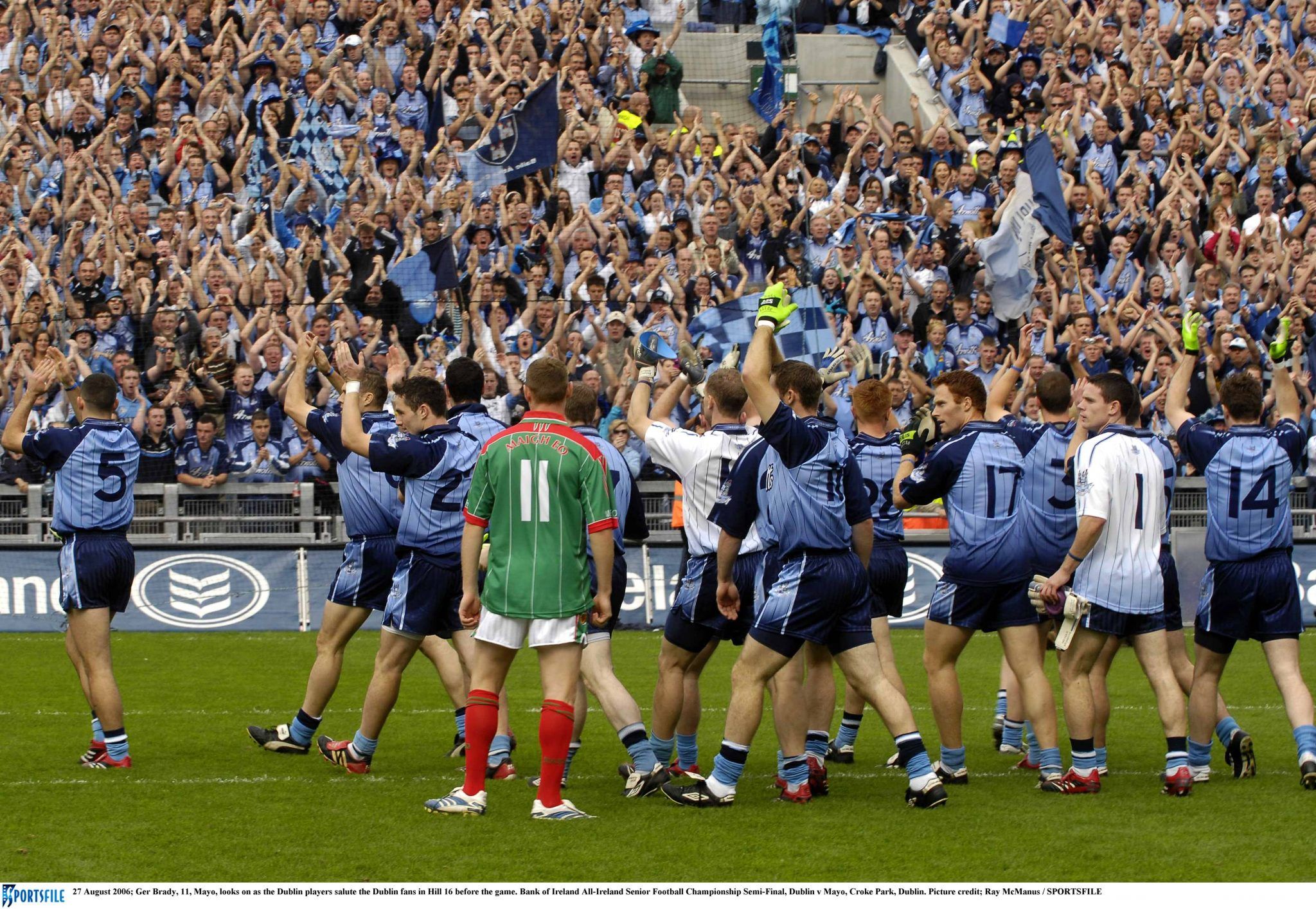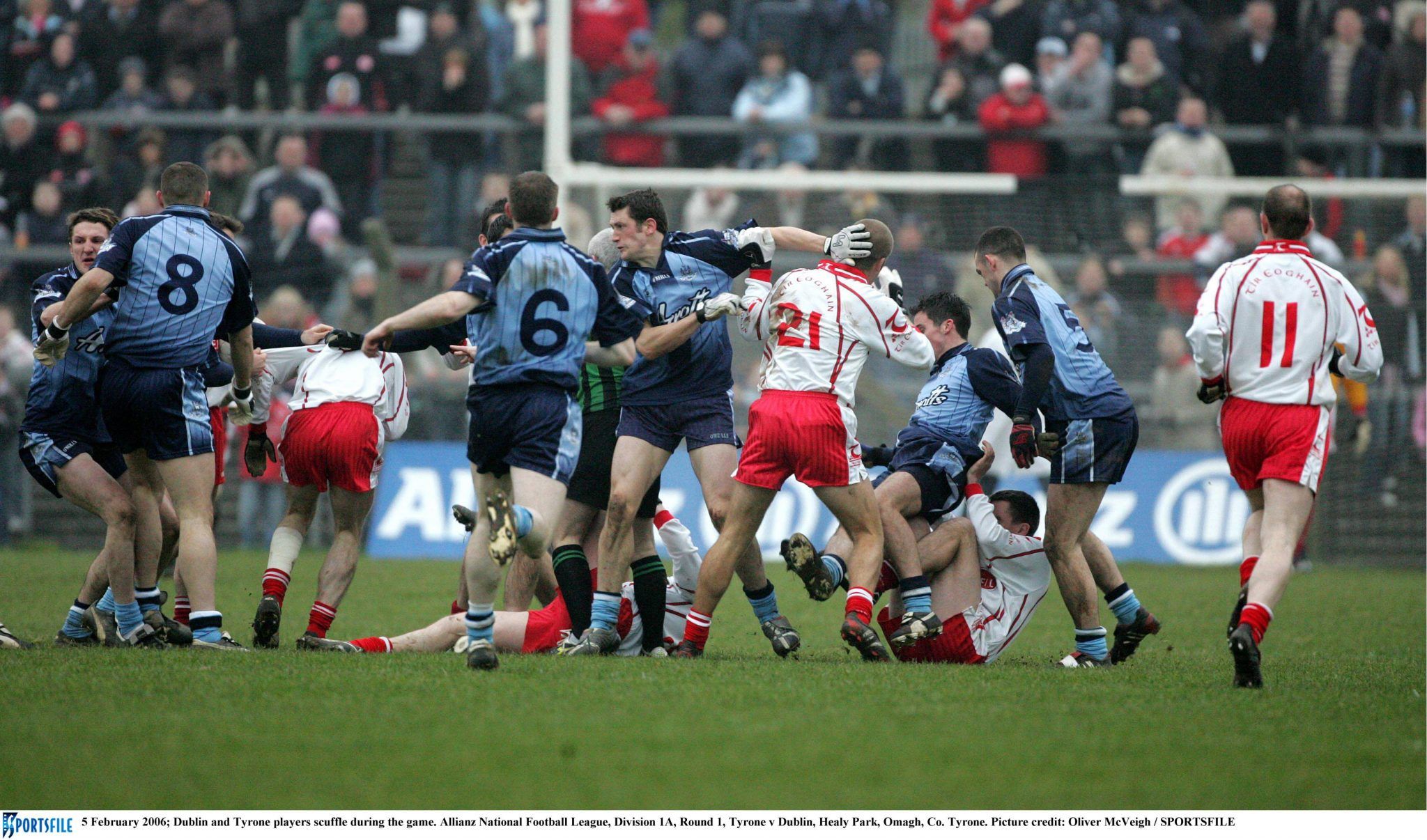The jersey alone was iconic.
After Tommy Lyons left as Dublin manager in 2004, his selector, Pill Caffrey took the reins on the capital, and although they came up short in terms of All-Irelands, their legacy stands the test of time.
The Na Fianna man thought that the Dubs were far too soft, especially after a relentless Tyrone team tore them apart in the 2005 quarter-final replay, with Ryan ‘Ricey’ McMenamin making sure to verbally underline this point to the players.
Caffrey wanted them to get tough and nasty, and that wasn’t all he had in mind – the infamous ‘Blue Book’ which he gave to every player at the start of the year was full of inspirational quotes, messages and instructions about reaching new untold levels.
He wanted the team to reconnect with Hill 16, and introduced the ‘Hill Salute’, which is when the whole team would grab each other by the jerseys and march up to the Hill before throw-in to get them geared up for battle.
Next up were the characters at his disposal. Despite not winning Sam Maguire, the side was bursting with talent like Ciaran Whelan, Alan Brogan and Jason Sherlock.
These were players who could make nearly any other county team in the country, and although they still didn’t hit the heights of say, a Colm Cooper, or Oisin McConville, in this era, they were much more famous.
There are several reasons behind this, with the obvious being the fact that they played for the capital, Croke Park is essentially their home pitch, and they have the largest district of clubs to choose players from.
This era also coincided with the Celtic Tiger, so Ireland was booming, people had dollars to spend, and a Dublin game was the hottest ticket in town.
The new ‘in your face’ attitude of the players under Caffrey also resulted in much more media attention, often moving themselves from the back pages of newspapers, to the front.
Sledging became a big part of their persona, and in 2006, the ‘Battle of Omagh,’ a league game against All-Ireland champions Tyrone took place and a statement was made.
Just because they were away from home they weren’t afraid to get stuck in, and a few scraps, punches and sending-offs later, resulted in what they saw as an important victory for them – a turning of the tide almost.
They conquered Leinster every year, but not without making a big fuss over it, particularly in their game against Laois in the ’05 final, where their behaviour was seen as unnecessarily provocative and chauvinistic.
One player who embodied this era perfectly was Kilmacud Crokes forward Mark Vaughan.
The blonde bombshell as he was known, was an outstanding forward, and absolutely lethal when it came to dead ball situations.
 19 June 2005; Mark Vaughan, Dublin, in action against Niall Murphy, Wexford. Bank of Ireland Leinster Senior Football Championship Semi-Final, Dublin v Wexford, Croke Park, Dublin. Picture credit; Matt Browne / SPORTSFILE
19 June 2005; Mark Vaughan, Dublin, in action against Niall Murphy, Wexford. Bank of Ireland Leinster Senior Football Championship Semi-Final, Dublin v Wexford, Croke Park, Dublin. Picture credit; Matt Browne / SPORTSFILEHowever, he had the reputation of a wild Premier League star who loved to party as hard as he worked, often ending up in the papers and the manager’s bad books for antics off the field.
On the field, he was leading the way for trash talking, constantly getting into his markers’ heads by letting them know just what he thought of them as players.
Just like the Celtic Tiger, Pillar Caffrey’s time at Dublin eventually went bust, and so too did Mark Vaughan’s career.
Pat Gilroy took over, and immediately implemented a culture change to abandon the trash talking, the flashy personas, and the unwanted curricular activities from outside of football.
 17 July 2005; Ciaran Whelan, Dublin, watched by team-mate Bryan Cullen, lifts up Ross Munnelly, Laois. Bank of Ireland Leinster Senior Football Championship Final, Dublin v Laois, Croke Park, Dublin. Picture credit; Brendan Moran / SPORTSFILE
17 July 2005; Ciaran Whelan, Dublin, watched by team-mate Bryan Cullen, lifts up Ross Munnelly, Laois. Bank of Ireland Leinster Senior Football Championship Final, Dublin v Laois, Croke Park, Dublin. Picture credit; Brendan Moran / SPORTSFILEMark Vaughan was one of the first casualties of this revolution, with his inter-county career coming to an end at the age of 23, after he was caught drinking when he shouldn’t have been.
The Hill 16 salute was brought to an end also, with the thinking being that they will show the fans something to get excited for, instead of just testosterone-filled bravado.
It’s worth noting that it wasn’t all just flash Harry’s in the panel either, with the hugely respected Paddy Christie as about as humble as you could be, and a certain Stephen Cluxton in-between the posts.
Players like Alan Brogan, Bernard Brogan, Ger Brennan, and several others did survive the transition into the new, glory era of Dublin, while superstars like Ciaran Whelan ended their career without a Celtic Cross.
Whether you loved them or hated them, they were hugely entertaining, and delivered some magical moments that gave the Dublin fans something to cheer about even when they were not winning All-Irelands.




















































